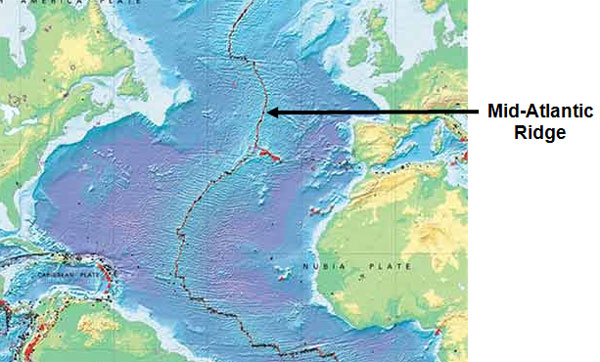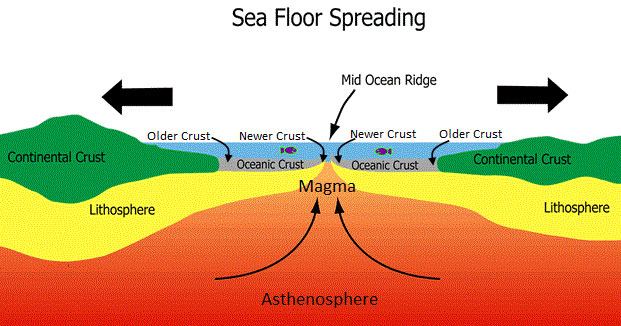![]() Look closely at the images below of South America and Africa. Watch the animation to see how the images would fit together.
Look closely at the images below of South America and Africa. Watch the animation to see how the images would fit together.
In the early 1900s, a scientist named Alfred Wegener noticed how the continents seem to fit together and developed the Theory of Continental Drift. Continental drift is the theory that continents can drift apart from one other and have done so in the past. Wegner's theory also explained why fossils of the same plant and animal species are found on both sides of the Atlantic Ocean. In addition similar types of rock and evidence of the same ancient climatic conditions are found on several continents.
Wegner hypothesized that all the separate continents of today were once joined in a single landmass that he called Pangaea.

![]() See if you can see how the continents fit together. Drag the continents so they fit closely together as possible. Rotate them by holding down the left or right arrow keys as you click.
See if you can see how the continents fit together. Drag the continents so they fit closely together as possible. Rotate them by holding down the left or right arrow keys as you click.
This activity requires Flash and is not supported by your browser or device.
Source: Pangaea, KScience
![]() See if you can trace how Earth's continents have shifted over time. Below are a series of five images showing the positions of Earth's continents during four different geologic time periods. Drag the images to the correct location on the timeline.
See if you can trace how Earth's continents have shifted over time. Below are a series of five images showing the positions of Earth's continents during four different geologic time periods. Drag the images to the correct location on the timeline.
Sea-Floor Spreading
Many scientists found fault with Wegener's theory because they could not hypothesize what force of nature would move entire continents. It was not until many years later that new evidence provided clues as to what caused the continents to move.
Look at the map below. Notice the dark line running down the center. This is called the Mid-Atlantic Ridge and it is actually a chain of submerged mountains!

The Mid-Atlantic Ridge is part of a worldwide system of mid-ocean ridges. Mid-ocean ridges are underwater mountain chains that run through ocean basins. Mid-ocean ridges are places where the sea-floor is spreading. Sea-floor spreading is the process by which new oceanic lithosphere is created as older materials are pulled away. As tectonic plates move away from each other, the sea floor spreads apart and magma rises to fill in the gap to create new oceanic crust. Study the image below of sea-floor spreading.

Notice that the older oceanic crust is farthest away from the mid-ocean ridge. The oldest crust in the Atlantic Ocean is found along the edges of the continents and the newest crust is in the center of the ocean.